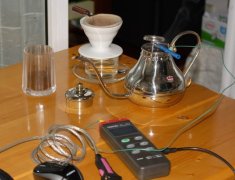Coffee industry must know: three major coffee
Blue Mountain Coffee

Blue Mountain Coffee (Blue Mountain Coffee)
It is a well-known coffee produced only in the Blue Mountain region of Jamaica in Central America, and only coffee grown in the Blue Mountain area above 1800 meters can be authorized to use the logo "Jamaican Blue Mountain Coffee (Blue MountainCoffee)," accounting for 15% of Jamaica's total Blue Mountain Coffee production. Coffee grown between 457m and 1524 m above sea level is called alpine coffee, and coffee grown between 274m and 457m above sea level is called Jamaican coffee. Blue Mountain Coffee has mellow, bitter slightly sweet, soft and smooth characteristics, and slightly sour taste, can make the taste more sensitive, taste its unique taste, is the best of coffee.
Cubita
Cubita Coffee (amber coffee)
It is all produced in the Crystal Mountain of Cuba and also has a high reputation in the coffee industry. Cuban Crystal Mountain Coffee ranks among the top in the world. Crystal Mountain is adjacent to the Blue Mountain Mountains of Jamaica, with similar climatic conditions, which is comparable to the Blue Mountain Coffee of Jamaica. Cubita adheres to the principle of perfect coffee, only making individual coffee, picking coffee beans by hand, plus washing coffee beans to ensure the quality of coffee. Cubirta is like an elegant princess, with the characteristics of nobility, tenderness and grace. The balance is excellent, the bitter taste and the sour taste are well matched, and there will be a delicate, smooth, fresh and elegant feeling in the taste. The designated coffee at the Cuban embassy is called the unique Caribbean flavor coffee.
Kopi Luwak
Kopi Luwak (Kopi Luwak)
Is a recently invented coffee, produced in Indonesia, coffee beans are one of the civets' food range, but the coffee beans cannot be completely digested by the digestive system. The coffee beans are fermented in the civets' intestines and stomach and excreted by feces. The local people take out the coffee beans from the civet feces and then do the processing, that is, the so-called "cat shit" coffee, this coffee has a unique taste and different taste. However, people who are used to this taste will never forget it for a lifetime. Due to the gradual deterioration of the wild environment, the number of civets is also slowly decreasing, resulting in a very limited output of this kind of coffee. People who can taste this coffee are very lucky.
Important Notice :
前街咖啡 FrontStreet Coffee has moved to new addredd:
FrontStreet Coffee Address: 315,Donghua East Road,GuangZhou
Tel:020 38364473
- Prev

Brief introduction of several excipients of Coffee
water. Water can be divided into soft water and hard water. General mineral water is hard water containing sodium, manganese, calcium, magnesium and so on. The taste of coffee is greatly reduced because hard water releases caffeine and tannins. Ordinary tap water can be used as soft water, but the first tap water in the morning, the water taken the day before and the second boiled water should be avoided as far as possible. If you use a water purifier or install
- Next

The change of Water temperature of hand Pot measured by CENTER 301 thermometer
Because the roaster has not yet arrived, in order to test whether the meter and software are easy to use, I have a whim to test the change of the water temperature of the hand flushing pot.
Related
- Beginners will see the "Coffee pull flower" guide!
- What is the difference between ice blog purified milk and ordinary milk coffee?
- Why is the Philippines the largest producer of crops in Liberia?
- For coffee extraction, should the fine powder be retained?
- How does extracted espresso fill pressed powder? How much strength does it take to press the powder?
- How to make jasmine cold extract coffee? Is the jasmine + latte good?
- Will this little toy really make the coffee taste better? How does Lily Drip affect coffee extraction?
- Will the action of slapping the filter cup also affect coffee extraction?
- What's the difference between powder-to-water ratio and powder-to-liquid ratio?
- What is the Ethiopian local species? What does it have to do with Heirloom native species?

